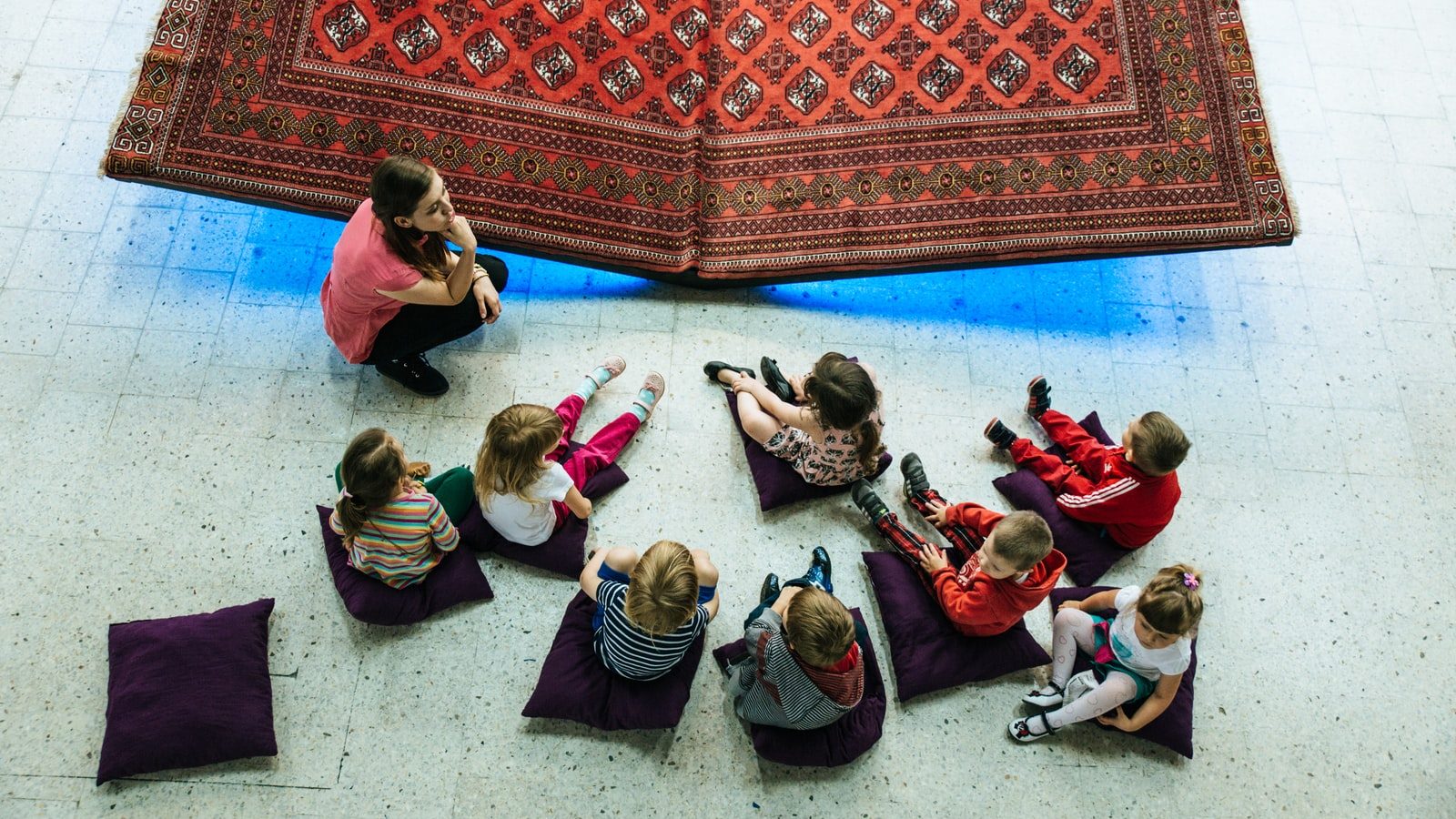How teachers can use a coaching approach to empower students in the classroom
A coaching approach reveals knowledge and resources through a process of self-discovery. Teachers can benefit from using coaching principles in the classroom to increase engagement and empower students in their learning.
Wisdom Weavers
Coaching conversations reveal possibilities and transform relationships
While coaching is often used in the workplace setting, the principles that support professional clients can also enrich the classroom. Direct coaching programs in K-12 classrooms and universities have helped students clarify goals and grow in self-confidence. Wisdom Weaver Elena Espinal has worked in coaching and education for over 25 years; she suggests that the potential to apply coaching principles far exceeds its current use.
“We named coaching as a profession and a kind of conversation, but we can also see how powerful is this model, this paradigm of seeing possibility, of assisting others in conversations to see possibility, and how this could help to change a lot of our kind of relationships in the world.”

This guide illustrates how teachers can apply a coaching approach to support students. Below, we outline five key features of a coaching conversation which can transform the learning environment:
1. Invite students to participate in their own learning and partner with one another
Coaches stand apart from other learning professionals because they ask instead of tell. The coaching relationship is based on equal and open communication that leads to empowerment and greater engagement. Adopting this framework in a classroom can bring students and teachers together to explore and apply information through a collaborative effort.
Coaching conversations invite clients into a partnership of discovery where learning is prioritized over “correctness.” One of the challenges of classroom engagement is that social structures often create divides between adults and children, teachers and students. If students are expected to receive knowledge and produce specific answers on a test, they may only speak if they believe they have the “right” answer. In contrast, when asking and answering questions becomes a process of discovery instead of testing, students can develop their opinions and the way they communicate ideas. Open communication also gives students the opportunity to express interest, request more information, or share personal experiences that relate to their lessons.
In an equal learning relationship, every party has valuable information to share. Students who feel respected and valued for their personal contribution to learning can also learn from their peers. Social-emotional skills including communication, empathy, and building and maintaining relationships have long-term effects on student development, job performance, and mental health. When teachers use a coaching approach in the classroom to enhance open discussion, they model how students can communicate and positively interact with their classmates.
2. Support students in identifying their personal goals and acknowledge their growth
As students grow, they learn about themselves and the world, leading to new skills and ambitions. Coaching emphasizes the importance of identifying skills and nurturing those key aspects that make each person unique. Teachers interact closely with the same students over the course of a year and are in a prime position to identify changes within the students and to acknowledge that growth.
The ICF Core Competencies outline that as coaches support their client’s growth, they also help them “design goals, actions and accountability measures that integrate and expand new learning.” Teachers can help their students to align their strengths and passions to set personal learning goals. Rather than basing success on a reward model, teachers can recognize and celebrate student success. They can openly identify student strengths, teach students to appreciate strengths unique to their classmates, and help students understand how they can develop their strengths like any other skill. This type of encouraging communication can enhance self-confidence and help students to appreciate how they are growing as they pursue a goal, even if they have not reached their final destination.
3. Inspire curiosity in students
In a coaching conversation, coaches ask deep questions to better understand a client’s perspectives, values, and goals. In a classroom, teachers can invite curiosity and personal application by structuring lessons around questions and open discussion. Open-ended, kind, and inquisitive questions help teachers to get to know their students both within the classroom and in their greater community. When students feel seen and heard they are more likely to engage with the materials presented in the academic setting. Additionally, they gain skills that help them better communicate with their peers and form valuable relationships through effective conversation.
Part of fostering curiosity means refraining from judgment. The coaching conversation asks both parties to experiment, ask “what-if,” and suspend opinion. When coaches model curiosity in their communication, they encourage clients to withhold judgment and be open to the unknown. Students can learn curiosity in the same way from their teachers. Curiosity can help both students and teachers to find previously unseen connections or perspectives, leading to deeper understanding.
4. Promote active listening in the classroom
The natural companion to asking open-ended questions is active listening, a skill threatened in today’s youth by digitization and information overload. A New York Times article explains that “good listening is not a matter of technique but of having the willingness to enter into another person’s life.” The skill is tied to compassion, empathy, and a general care for others. EPOG Academy, a coaching intervention for high schoolers in Texas USA, explains that coaching is “a lot of asking and not a lot of telling. Coaches are professionally trained to be skilled listeners, ask insightful questions, and share insights that provide clarity and evoke new awareness of self and situations.” Classrooms are a regulated setting where teachers can facilitate kind communication and encourage active listening. As students grow to learn about one another, they are more likely to care for the person inside and beyond the classroom.
5. Help students apply problem solving skills to overcome challenges
Challenges are a natural part of life but the ability to reflect and act in the face of adversity is a key skill. Coaches help their clients face obstacles by emphasizing the resources, relationships, and opportunities at their disposal. When teachers identify classroom challenges and invite students to propose solutions, they model problem-solving skills. As the Center for Applied Imagination states, “The reality is that to survive in a fast-changing world you need to be creative.”
Classroom settings can also recognize that collective resources, strengths, skills, and opportunities can lead to large-scale change. When teachers connect diverse student skills to tackle a complex problem, students learn how to appreciate their differences and work in a team. Problem-solving skills equip students to learn from adversity and build greater self-confidence. The ability to respect and applaud differences can also prepare students to engage in their communities and collaborate with diverse teams when facing obstacles in their professional lives.
Coaching Empowers People
Teachers who model collaborative partnership, goal setting, curiosity, active listening, and problem-solving help students develop soft skills needed to thrive in the workplace. The world is rapidly developing through trends such as technological innovations, policy changes, and climate change. The future is now, and it is paramount that students are prepared to think on their toes. By incorporating coaching skills and techniques into the classroom, teachers can build an empathetic atmosphere that nurtures student growth and self-confidence. Students who feel heard, seen, and capable, perform better in their coursework. Additionally, these lessons extend beyond school when students can apply a coaching mindset to their careers and personal lives.
Manifesto for the Future of Education
34 Wisdom Weavers from 15 different countries gathered to reimagine the future of education, using the lenses of coaching, pedagogy, sustainability, technology, social transformation, and collaboration. These discussions inspired us to craft a call to action — a Manifesto for the Future of Education — that establishes a vision for transforming education around the world while integrating the practice of coaching as a catalyst for positive change.




